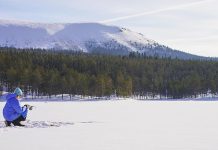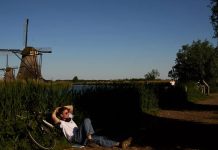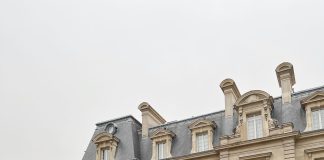Kadayawan Village: Exploring Davao’s Indigenous Community
Kadayawan Village is a cultural hub positioned in Davao’s Ramon Magsaysay Park, where visitors can experience the wealthy and diverse culture of the Philippines. The village is an initiative by the Davao City Tourism Office to guard and preserve the country’s beautiful and colourful culture for future generations. It showcases the standard homes of the Lumad and Moro groups and the 11 ethnolinguistic tribes of Davao City.

Visitors to Kadayawan Village can discover the various textiles, clothing, tribal delicacies, and ways of living of the 11 tribes. The homes in-built the village are unique and offer a glimpse into the fascinating cultures of the indigenous people of Davao. The village is a preferred attraction in the course of the Kadayawan Festival, a week-long celebration held every August that honors the bountiful harvest and diverse cultures of Davao City.
Kadayawan Village shouldn’t be only a cultural attraction but additionally an emblem of peace and unity amongst the various tribes of Davao City. It’s a must-visit destination for anyone enthusiastic about learning in regards to the wealthy history and traditions of the Philippines. The village offers an authentic cultural encounter that enables visitors to immerse themselves in the varied heritage of Davao’s indigenous tribes.
Kadayawan Village: An Overview
The Kadayawan Village features the standard houses of the 11 tribes of Davao City, namely the Bagobo-Klata, Ata, Obu-Manuvu, Tagabawa, Matigsalug, Klata-Djangan, Tausog, Maguindanao, Iranun, Maranao, and Kagan. Each home is designed to reflect the unique culture and traditions of the tribe it represents. Visitors can learn in regards to the tribe’s lifestyle, beliefs, and practices by exploring the homes.
The Kadayawan Village is integral to the Kadayawan Festival, an annual Thanksgiving celebration for bountiful harvests, life, and culture. The village comes alive in the course of the festival with colourful performances, music, and dances. Visitors can witness the colourful culture of the Lumad and Moro tribes through the festival’s various events.
Other than being a cultural attraction, the Kadayawan Village promotes eco-tourism and sustainable tourism practices. The village uses indigenous materials designed to mix with the natural surroundings. Visitors can enjoy the plush greenery and scenic views of Ramon Magsaysay Park while learning in regards to the country’s wealthy cultural heritage.

Cultural Significance
The village showcases the varied ethnic tribes and groups within the region, including the Ata, Kagan, Iranun, Maranao, Klata, Tausug, Lumad, Matigsalug, Bagobo-Tagabawa, Maguindanaon, and plenty of more. Each tribe has a cultural home within the village, designed to mimic their traditional dwellings.
The Kadayawan Festival, held annually in August, celebrates the bounties of harvest and the gifts of nature. The festival is a showcase of the region’s wealthy culture and traditions. It’s a time for Davao City’s people to unite and have a good time their heritage.
Kadayawan Village plays a significant role in promoting peace education within the region. By showcasing the varied cultures and traditions of the various tribes, the village promotes understanding and respect among the many people. It also serves as a platform for cultural exchange and dialogue.
The National Commission for Culture and the Arts (NCCA) has recognized the cultural significance of Kadayawan Village. The NCCA has supported the village to make sure it continues promoting and preserving the region’s wealthy cultural heritage.











Architecture and Crafts
Kadayawan Village is a showcase of Philippine architecture and craftsmanship. The village features the standard houses of the Lumad and Moro tribes which can be meticulously crafted by expert artisans from different tribal communities found inside the city. These houses are manufactured from materials akin to bamboo, lauan, coco lumber, and nipa, that are locally sourced and sustainable.
The tribal houses are designed to reflect the unique culture and traditions of every tribe. As an example, the Torogan of the Maranao tribe is a duplicate of their traditional palace. It’s a grand structure that features intricate carvings, designs, and iconic panolong and okir motifs. The Turogan of the Maguindanao tribe, then again, is an emblem of the sultan’s power and prestige. It’s a two-story structure with a veranda and a bay sug, a big hall where necessary events are held.
Other than the standard houses, Kadayawan Village also showcases the craftsmanship of the tribes in various types of art. Visitors can see the intricate beadwork and weaving of the Bagobo-Klata and Ata tribes, the intricate brassware of the Tausug tribe, and the colourful malongs of the Maranao tribe. The village also features the baley, bolloy, baoy, and togan, that are traditional musical instruments of the Lumad tribes.
Traditional Clothing and Delicacies
Visitors to Kadayawan Village can experience the wealthy culture of Davao’s 11 indigenous tribes, including their traditional clothing and delicacies. The village showcases the unique textiles and clothing of every tribe, that are made using locally sourced materials and traditional weaving techniques.
One can witness the intricate designs and patterns woven into the standard clothing of the tribes. The clothing reflects their culture and heritage; each tribe has a definite style. Visitors may even try traditional clothing and take pictures to commemorate their experience.
Other than traditional clothing, the village also offers a wide selection of delicacies which can be unique to the tribes. Visitors can taste the standard dishes and snacks, which include rice cakes, grilled meat, and various sweets. Each tribe has its specialty dish, and visitors can sample the various flavors and textures.
The village also offers visitors the chance to learn how one can make a few of the delicacies themselves. There are workshops where visitors can learn how one can cook traditional dishes and even take home the recipes to try them out later.
Along with traditional clothing and delicacies, visitors can buy various handicrafts and accessories made by the tribes. These include bags, jewelry, and other items made using traditional materials and techniques.
Education and Awareness
Kadayawan Village showcases diversity and a possibility for education and awareness. The village has a peace education component that promotes unity and peaceful coexistence amongst different indigenous communities who live together as neighbors. Visitors to the village can study the various cultures and traditions of the varied tribes that decision the region home.
The village is a wonderful place to learn in regards to the ancestral homelands of the Lumad and Moro groups. The replica structures within the village are built using traditional materials and methods, providing visitors with a glimpse into the past. The village also offers a possibility to learn in regards to the indigenous political structure based on tribal councils and leaders.
The Dinehey Amphitheater on the Kadayawan Village is a wonderful place to learn in regards to the traditional music and dance of the indigenous people. The amphitheater hosts cultural performances and events all year long, allowing visitors to experience the region’s wealthy cultural heritage.
The Pangayao, a conventional Lumad dance, is considered one of the highlights of the Kadayawan Festival. The dance is a reenactment of a tribal war, symbolizing the unity and strength of the Lumad people. Visitors to the festival can witness this incredible dance and study its significance in Lumad culture.
Events and Celebrations
Kadayawan Village is a spot where people come together to have a good time the culture and traditions of the region. The village hosts various events and celebrations all year long that showcase the range and richness of the local culture.
Probably the most significant events in Kadayawan Village is the Kadayawan Festival. This festival is a week-long celebration that takes place every August and encompasses a range of activities akin to street dancing, floral float parade, cultural festivities, street parties, and live shows. The festival is a celebration of the bountiful harvest and is a way for the people of the region to present thanks for his or her blessings.
The Kadayawan Festival is a highly anticipated event within the region, attracting visitors from all around the world. The festival has been an important success lately and has been praised for its ability to bring people together and promote peace and unity in the neighborhood.
Along with the Kadayawan Festival, many other events and celebrations happen in Kadayawan Village all year long. For instance, the village hosts a wide range of traditional dances which can be performed by the unique inhabitants of the region. These dances are an important a part of the local culture and supply a glimpse into the region’s history and traditions.
The village also recently launched the Peace Hub, a middle that promotes peace and understanding amongst the various ethnic groups within the region. The Peace Hub is where people can study one another’s cultures and traditions and work towards a more peaceful and harmonious community.
The village has undergone significant renovations lately, and it’s now a contemporary and vibrant community that’s happy with its heritage and traditions. The wives of the village leaders have played a major role in the event of the village, and their labor and dedication have helped to make Kadayawan Village successful.

Regularly Asked Questions
What’s the origin of Kadayawan Festival?
Kadayawan Festival is an annual celebration in Davao City, Philippines. It’s a week-long event that takes place every August. The festival’s origin could be traced back to the pre-colonial period when the indigenous tribes of Davao celebrated a bountiful harvest. The festival is a way of giving due to their gods for the blessings they’ve received.
What’s the importance of the Ata tribe in Kadayawan Festival?
The Ata tribe is considered one of the indigenous groups in Davao City. They’re known for his or her unique culture and traditions. The Ata tribe plays a major role within the Kadayawan Festival as they’re considered one of the principal tribes that take part in the celebration. They showcase their culture and traditions through their music, dance, and clothing.
What are the 11 tribes that take part in the Kadayawan Festival?
There are 11 tribes that take part in the Kadayawan Festival. These tribes are the Ata, Matigsalug, Ovu-Manuvo, Klata-Djangan, Tagabawa, Tausug, Maguindanao, Maranao, Kagan, Iranun, and Sama. Each tribe has its own unique culture and traditions that they showcase in the course of the festival.
Where is Kadayawan Village positioned?
Kadayawan Village is positioned in Davao City’s Ramon Magsaysay Park. It was created by the Davao City Tourism Office to preserve and protect the cultural heritage of the indigenous tribes within the region. The village features replica houses of the various indigenous groups in Davao, showcasing their lifestyle, culture, and traditions.
What’s the inspiration behind Kadayawan Festival?
The Kadayawan Festival is inspired by the indigenous tribes of Davao City. It’s a way of celebrating their culture, traditions, and lifestyle. The festival can be a way of promoting unity and peace amongst the various tribes within the region. The festival is a celebration of life, thanksgiving, and abundance.
Davao City Travel and Tour Packages
Trying to find the most effective Davao City hotels, resorts, and inexpensive flights within the nearby Cities? Try our complete list of low cost hotels and resorts via Agoda, or you might also see available Airbnb properties in town.
Want more updates about recent tourist attractions in Davao City? Like, Follow, and Subscribe to OutofTownBlog.com on Facebook, Twitter, Instagram, and Pinterest, and Team out Of Town on YouTube for more Travel Suggestions.
Also read: Top 15 Best Festivals within the Philippines You Should Experience
Unlock the world’s wonders with unforgettable journeys tailored just for you! Whether you crave sun-kissed beaches, thrilling adventures, or rich cultural escapes, your dream destination awaits. Enjoy seamless travel with expert tips, exclusive deals, and handpicked experiences that Turn Every Trip into a lifetime memory.










